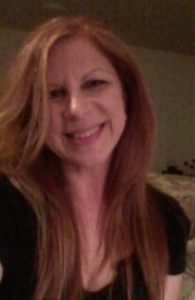
Creativity in the world of communications is something that may bring to mind one of two thoughts. The first, well, yes, obviously one must be ‘creative’ when working in this field. The second, creative communications, how is this possible? You’re not making a work of art, are you? That’s a good question. I think we all have a personal definition of what it means to be creative.
I have worked as a public affairs specialist since the fall of 1999. It may sound like years of experience, but, as a person who only wanted to work behind the camera as a photojournalist, it took years before I felt somewhat comfortable as a news writer and communicator. Still today I battle with the feeling that somehow I’m a fraud. Why? Because my writing background stemmed in creative writing – essays, poetry and lyrics. News writing or journalism was not unfamiliar to me, but it was not overly familiar and truth be told, I was less than passionate about journalism. Give me the weird, wild and the unchartered. That was what I longed for but lo, how things change with experience. To overcome the battle of not enjoying news writing, I learned to apply creative communications.
I had to be creative in my approach to a job that was at times fascinating but also frightening as I had yet to learn how to correctly put together a news story, let alone a feature or editorial. In the years since then, I have noticed three things that help me to remain creative in a job that at times requires me to write dry subject matter or write yet another version of the same story three years running. Instead of simply following a set template, i.e. inverted pyramid style, I use three rules when I find myself stilted.
1. Read. Read. And then read some more.
I read incessantly. I don’t simply read the news but I read a bevy of writing periodicals and genre of literature. Though the saying may be trite to many of you reading this blog, it has proven true for me: If you want to write, you must read.
I’ve been blessed and cursed to mimic a number of writing styles. This is what propelled me through college composition as one of my class’ top essayists. I didn’t do it as an easy way out. I did it because it offered me a starting point. If I recently read an author that I found breathtaking, well, they influenced my subconscious and also my writing style. Whether it was through their use of sentence structure, choice of adjectives, or character development, they impacted my writing style. Ernest Hemingway is a prime example. I adore his writing. He is concise, yet he is never dull. You can feel the warmth of the sun as you read a passage from The Garden of Eden describing David and Catherine as they sit on the beach.
2. Step outside the comfort zone.
How I do this is by indulging in science. Science fascinates me. It always has even though I’m horribly lacking in math skill or linear thinking. Imagine working behind a telescope and finding the shapes and colors of an assortment of bacterium. Works of art? I look at photographs on the NASA website and each one of them presents a story waiting to happen. Who discovered this galaxy? What did it take to discover said galaxy, and why did they want to discover it in the first place? You can use a similar method (not the ‘5 Ws’ of course but a scientific approach) as you work on a creative communications plan. Step outside what college or the daily grind has taught you and approach projects in a way that is not the norm for you. Creativity will bloom in full, no fertilizer needed. It will happen naturally.
3. Observe others.
That may sound strange but watching people, their mannerisms, learning what interests them, often leads me to seeing something new and applying it to my communications style. The pressure of deadline looms incessantly in the high-octane world of communications, but that doesn’t mean you have to remain stunted by using the same tried-and-true formulas in your own writing or project development. Be open to the new.
When I think of being creative I don’t think of an artist or a musician or a writer, though I used to when I was younger. Now, after gaining a bit of age (and hopefully wisdom), what comes to mind when I think of creative communications is innovation, the ability to try something new. To step outside the box of the ordinary and shoot for the amazing using whatever method comes to mind, that is what I consider being creative.
Kelly Jo Bridgwater is a noncommissioned officer in the United States Army and a public affairs specialist who is currently assigned to the Fort Gordon Public Affairs Office at Fort Gordon, Ga. She has worked in public affairs since 1999 in a number of locations around the world. Her favorite assignment was the year she spent working in the Sinai region of Egypt from 2006-2007. Her areas of emphasis are news writing, photojournalism, crisis communications and social media management. Follow her on Twitter at @KellyBridwater or email her at bridgwaterkjo@gmail.com.




